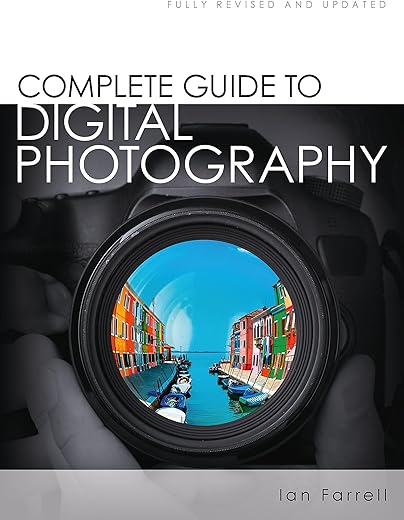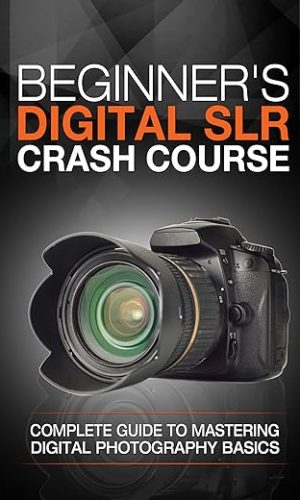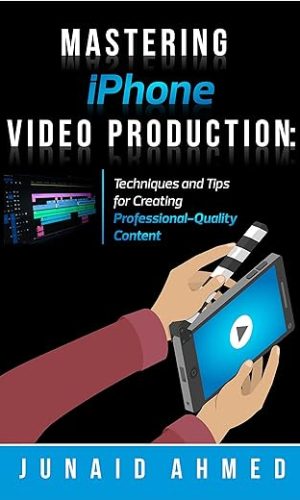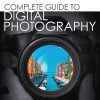Complete Guide to Digital Photography: Ian Farrell
£19.00
Are you intent on capturing the perfect sunset? A budding photojournalist? Or ready to take your holiday snaps to the next level? The Complete Guide to Digital Photography is your definitive guide to taking, processing and printing sharper, more colourful and better looking pictures.
Ian Farrell’s expert tips take you from the basics of using your camera to advanced darkroom techniques with 52 step-by-step projects including portraits, landscapes, still-life images, fast-moving objects and photographing live events. Introducing you to the latest software and techniques and featuring technical tips, interviews with the professionals, troubleshooting and over 400 inspirational images, the Complete Guide to Digital Photography is the ultimate master class in digital photography.
Contents include: Portrait photography, Landscape photography, Street photography, Nature and wildlife, Dynamic live action, Special effects, Macro photography, Travel photography, Wedding photography, Digital darkroom, Colour management, Sharpening, High dynamic range, Skin smoothing, Printing your images, Making a portfolio, Your first exhibition, Selling your photographs.
Read more
Additional information
| Publisher | 1st edition (16 Nov. 2017), Quercus |
|---|---|
| Language | English |
| Paperback | 416 pages |
| ISBN-10 | 1786489120 |
| ISBN-13 | 978-1786489128 |
| Dimensions | 18 x 2.5 x 24.5 cm |










by Mr. P
A really good book that touches upon many aspects of photography with useful insight into today’s digital world.
Certainly worth it for the luddites, or those wanting to upgrade from a point and shoot or camera phone. One nice aspect is that the author does not reject the use of camera phones and is quite supportive of different camera formats. I would deem it excellent for younger people that show an interest in photography – the book has enough content to appeal to a wide age group.
Photography has been a hobby of mine and recently have been upgrading and adding to my DSLR kit. Personally I found the book a little too generic. So far I have found Syl Arena’s books to be excellent for those wanting to take their photography to a higher level.
by RobertW
A good introduction to all aspects of digital photography. I started with a Pentax SLR back in 1979 and bought my first “bridge” camera about 9 years ago, this book exposed my knowledge gaps in digital photography and helped me overcome them. My main concern is the selection of focal lengths used in the book. I feel it is better to stick to full frame focal lengths and allow readers to link back to the focal length of their own format. The crop factor of the various digital formats is well explained in the book.
by Ken
At first sight, the Complete guide to Digital Photography looks like an excellent guide for both beginner and more experienced photographers. Comprehensive, readable and good looking.
One minor niggle, though.
As the owner of a DSLR and Fujifilm X20 compact, I was irritated by text on pages 10-11, appearing next to a picture of the latter, stating that ‘The limitations of a compact camera include slow reaction times when shooting pictures and limited control over depth of field’.
Anyone who has used one knows that, far from possessing these limitations, the X20 is a highly capable camera which can hold its own in these and many other respects with bigger, bulkier and often not as beautiful-looking DSLRs.
Either Ian Farrell has not used an X20 or he was not responsible for using the picture of one as an illustration of what would be fair comment about cheaper, more down-market compact cameras. My worry, not having read the book yet in depth, is that it has been updated with too little care and precision, if not by Ian himself, by his publishers.
Hopefully, the error I have described, and any others of a similar kind, will be corrected in any future revised edition.
by Samantha
This Guide, (which is a soft back) is a bit of a shock for someone like me that has just moved up from a compact to a Bridge camera as it dives right in from the beginning, leading of whith a look at equipement, then into using the camera before leading off into more advanced areas that I guess most people don’t want or need. Therefore although I am still peering into this book here and there at the moment, I have to conclude that it is really only for someone properly interested in Photography.
by Brotherboard
I spent some considerable time in a book store perusing the photography manuals on offer. I kept coming back to this one. It is well laid out clear and concise. It gets you to the point without the usual waffle. At the time however I baulked at paying £16.99.
I am so glad I did as the price I paid on Amazon [£9.60 including postage] makes me feel I have a gem at an absolute bargain price.
Chapters are interspersed with “assignments” encouraging you to put into practice what you have learned from the book. Included in the chapters is a guide to photo editing and retouching with photoshop………..the digital darkroom.
Ian Farrell can be proud of this publication.
by Kaz
Read the reviews and glad that I purchased this book. I am a bit more advanced than just a beginner and though really interested in photography have found other books and internet information challenging and hard work. This book is the best for guiding you through from beginner level and keeps your interest rather than being a pick up put down and up again book. Simply explained methods and use of your camera and also printers/scanners/editing suites and how to get the best out of your camera and how to do it, all simple to follow reading. One I found I could just pick up and read and have an instant better understanding of what it was about. Good product in the presentation of the book for the money this is a real bargain and would recommend to any budding photographer in comparison to any other photographic book.
by PS
What a great book for starters like me. Its includes a lot in little text. Composition, Exposure, street photography, weddings, portraits… these all could and do fill entire books! The author tackles them in 2 to 10 pages. That’s awesome. It also dedicates a good portion of the book for post processing photos at the computer station. Its a jack of all trades not a detailed essay on one principle. If the reader understands this, its great.
Where it could be improved? That’s easy: every shot should’ve had the camera settings and kit used mentioned. Seems only (most) of the assignments have this. Its would provide great insight to some shots. Nevertheless, where this information is provided its good. Also, for instance, portraiture does not mention if a shot needs to be half or 2/3’s, where the cut should be: between joints, not at them (legs-wise I only personally think above knee) which is mentioned in the earlier composition chapter – this just means you need to read the book thoroughly which one should anyhow 😉 .
I picked this book to fill the general photography discussion and ‘Shapshots to great shots’ from John Batdorff for my camera to fill the gap between a camera manual and the principles of photography. There are another couple of books I liked most specifically composure and exposure, but lets walk before I can run.